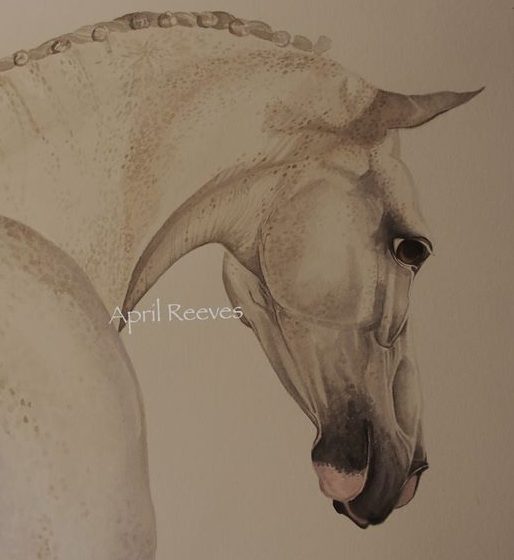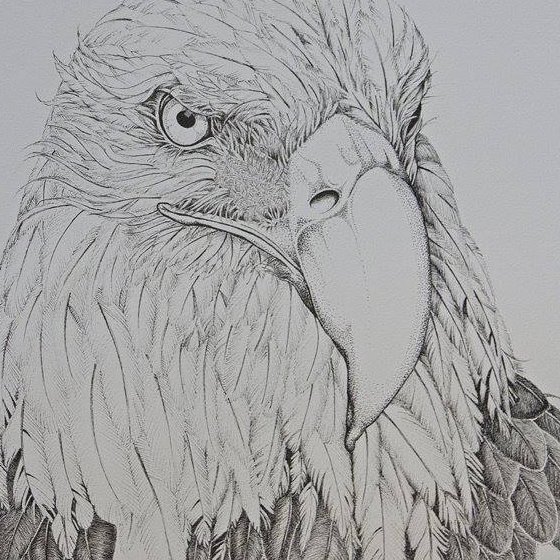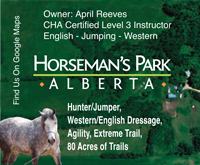 A SPECIAL POST BY MARIJKE VAN DE WATER
A SPECIAL POST BY MARIJKE VAN DE WATER
Answer:
Introduction
West Nile Virus was first discovered in 1937 in a woman in the West Nile province of Uganda in Central Africa. Sixty-two years later in 1999 it was identified in flamingos and pheasants in New York City. By 2001 the disease spread rapidly to horses across the U.S.A. hitting Florida particularly hard. To date, WNV has been reported in approximately 10,000 horses in North America, 300-400 of those cases have been reported in Canada.
The fatality rate under conventional veterinary care is approximately 30%-35% of affected horses. Bear in mind that statistics are difficult to calculate since there are hundreds of unreported and/or unconfirmed cases and statistics include horses who were euthanized before treatment. As well, Eastern Equine Encephalitis, with symptoms similar to WNV, can often be mistaken for WNV but has a higher fatality rate. Botulism and rabies can also mimic WNV. The majority of horses who contract WNV will survive and fully recover, although those with weaker constitutions and poor immunity may take as long as 1-2 months to return to normal. It is the opinion of this author that an effective natural health program will improve the statistics dramatically.
Transmission
WNV cycles between mosquitos and birds with crows and jays being most susceptible. Mosquitos infect birds, horses, and people. Birds can infect other birds and mosquitos, and until a few months ago it was thought that no horse-to-horse or human-to-human transmission could occur. There is now evidence that the disease can be transmitted among humans and humans and among horses and horses, via body fluids such as blood transfusions and breast milk.
Signs & Symptoms
Many horses exposed to WNV will not develop any symptoms or will only develop a flu-like condition with mild symptoms. In immune compromised horses the virus can affect the Central Nervous System causing symptoms of encephalitis, with swelling and inflammation of the brain and spinal cord. The most common signs (i.e. exhibited by more than 40% of affected horses) are: muscle weakness, loss of coordination, loss of appetite, depression, drooling, muscle tremors of neck, nose, and lips, and swellings. Less common symptoms are fevers, paralysis, hypersensitivity to touch and noise, and temporary blindness.
Risk Factors
Generally, the horses most susceptible to this disease (as most other infectious diseases) are the young and the old (especially those over the age of 25) and, of course, those horses with weakened immune systems. Horses with poor immunity may not always display obvious symptoms. Common causes of poor immunity include:
- Poor nutrition through inadequate or inappropriate feeding programs, and/or vitamin/mineral deficiencies, particularly Iron, Iodine and B vitamins.
- Toxic liver – the liver plays a critical role in building immunity against viral diseases and is responsible for detoxifying and removing metabolic waste, chemicals, insecticides, pesticides, and drugs from the body. Horses who have been subjected to an accumulated overload of chemicals in the form of frequent dewormers, sprays, vaccines, drugs, and medications are most at risk for disease since their liver function is most often compromised. This is one of the reasons that our geriatric friends are often predisposed to disease. It is therefore not conducive to health and immunity to spray your horses, barns (and yourselves) with chemical mosquito sprays.
- Stress! Traveling, difficult training and performance programs, illness, stall confinement, isolation, loneliness, and weaning should be considered high-stress situations and horses should be supported nutritionally and emotionally during any of these times, especially if threatened with exposure to disease. (Never consider vaccinations during periods of stress).
Prevention
Peak illness months for WNV are August, September, and October, however any mosquito season in your area should be considered a risk factor. Those areas that have killing frosts offer protection in the winter since there are no mosquito vectors. (Horses that have been or will be vaccinated should use the same prevention/treatment protocols as outlined here.)
- Riva’s Remedies Equi-Boost – “For Peak Immunity” Boosts your horse’s immune system against viruses, detoxifies and stimulates the liver, cleanses the system of toxins and chemicals, is naturally high in Iron levels, and blocks allergic and inflammatory reactions. Use during high-risk periods and/or as a general immune stimulant.
- Riva’s Remedies Happy Horse – “Superior Natural Nutrition” Builds immunity through optimum nutrition – minerals, vitamins, fibre, and cell salts. Promotes superior health and vitality by providing key nutrients. Helps balance the effects of stress. Use on a regular basis.
- Homeopathic WNV nosode – a homeopathic dilution of the disease often used by homeopathic veterinarians for prevention and treatment. Use a 200ch potency – one dose daily for 3 days only. One dose = 5 pellets. Repeat a 3-day cycle every 2 months during mosquito season.
- Stress reduction – Horses should be kept in as natural an environment as possible with good nutrition and appropriate supplements.
Treatment
Should your horse succumb to WNV the goal is to weaken the virus and boost the immune system.
- Riva’s Remedies “Flu-Ease” – A liquid homeopathic formula to be used at the onset of any flu-like/viral symptoms such as fevers, weakness, and inflammations.
- Riva’s Remedies – “Pro-Vir-Al” – A liquid homeopathic formula to be used at the onset of viral symptoms such as swellings, headaches, depression, drooling, muscle tremors, in coordination, disorientation, hypersensitivity to noise and light, and paralysis.
- Pantothenic Acid (Vitamin B5) – 3,000 mg daily to strengthen adrenal gland function in resisting inflammation and disease; natural pain relief.
- Homeopathic WNV nosode – Use a 1M potency – one dose twice daily until the symptoms have ameliorated.
- Continue or begin with Riva’s Remedies Equi-Boost & Happy Horse.
- Don’t panic! As with any health condition your horse needs you to have a positive healing attitude and to provide an effective natural health protocol to support the healing forces that nature has inherently given to us all. Viruses and bacteria are prevalent everywhere – the best defense is a healthy immune system and a stress-free environment.
Adverse Vaccine Reactions
The issues surrounding whether or not to vaccinate are controversial and complicated.
- The existing vaccine that is available is still conditional (i.e. not fully approved).
- No vaccine has a 100% success rate – failure rates vary depending on the vaccine.
- Adverse vaccine reactions are being reported with some horses.
- Adverse vaccine reactions should be treated with Riva’s Remedies Joint-Clear, which supports your horse’s natural cortisone production thus decreasing inflammation and neutralizing the toxic allergic reactions to the vaccine.
Marijke van de Water, B. Sc., DHMS
Homeopathic Practitioner
Equine Health Consultant
Ph. # 1-800-405-6643
Email: rivas@nowcom.ca
Web: www.rivasremedies.com













West nile virus has been a cause of major concern through out the world especially during the warm-weather months of spring and summer season. As there is no vaccine for West Nile encephalitis, you must be aware of the necessary precautionary measures that should be adopted to prevent infection. The only way to protect you from west nile virus is preventing yourself from being bitten by an infected mosquito by reducing the number of mosquitoes around your surroundings or by protecting yourself with a natural mosquito repellant.